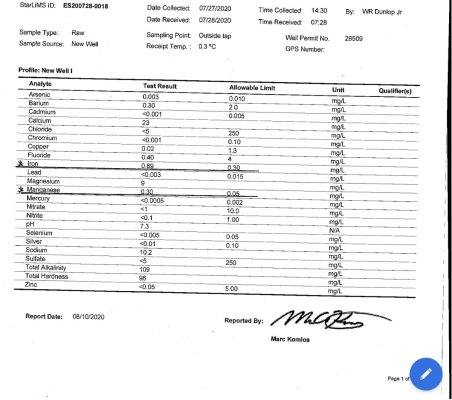Hello,
I have posted about this before and am still coming up with questions.
Here is my situation. I moved to a house with a well. I have a new softener and a dual membrane rodi with 3 di stages. I posted before about my cation resin getting used up in 100 gallons and people said there needs to be a degassing chamber. I used a trash can and an air stone and aerated the ro water for 2-4 days before running through my di and overall it doesn’t slow the depletion down enough to deal with the hassle of an extra degassing chamber/brute trash can. It actually just uses up my cation cartridge at the same rate as if I run my rodi normally.
Weirdly, I noticed that running the rodi normally recharges the anion di resin and depletes the cation. And running the ro water through the di after gassing it depletes the anion but recharges the cation. By recharge, I mean that the di cartridge will be half color changed (after about 50-75 gallons of water), then when switching up the method of filtering water it goes back to a dark color and I can no longer see the color change of di..
Another thing I noticed is after degassing the ro water, the tds going into my first two stages of di is double (in comparison to running my rodi off my main water) and then hits zero after the third stage. But why would this be? Is dust getting in my ro water trash can and raising tds?
If anyone has a better solution to using up di resin when using well water, please share it. I would love to simplify this problem.
Thank you.
Nick
I have posted about this before and am still coming up with questions.
Here is my situation. I moved to a house with a well. I have a new softener and a dual membrane rodi with 3 di stages. I posted before about my cation resin getting used up in 100 gallons and people said there needs to be a degassing chamber. I used a trash can and an air stone and aerated the ro water for 2-4 days before running through my di and overall it doesn’t slow the depletion down enough to deal with the hassle of an extra degassing chamber/brute trash can. It actually just uses up my cation cartridge at the same rate as if I run my rodi normally.
Weirdly, I noticed that running the rodi normally recharges the anion di resin and depletes the cation. And running the ro water through the di after gassing it depletes the anion but recharges the cation. By recharge, I mean that the di cartridge will be half color changed (after about 50-75 gallons of water), then when switching up the method of filtering water it goes back to a dark color and I can no longer see the color change of di..
Another thing I noticed is after degassing the ro water, the tds going into my first two stages of di is double (in comparison to running my rodi off my main water) and then hits zero after the third stage. But why would this be? Is dust getting in my ro water trash can and raising tds?
If anyone has a better solution to using up di resin when using well water, please share it. I would love to simplify this problem.
Thank you.
Nick




















